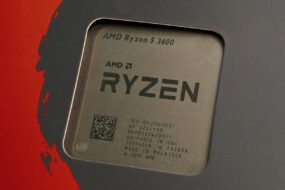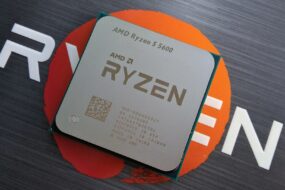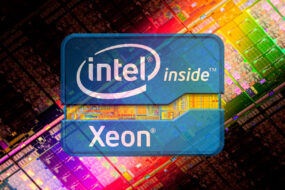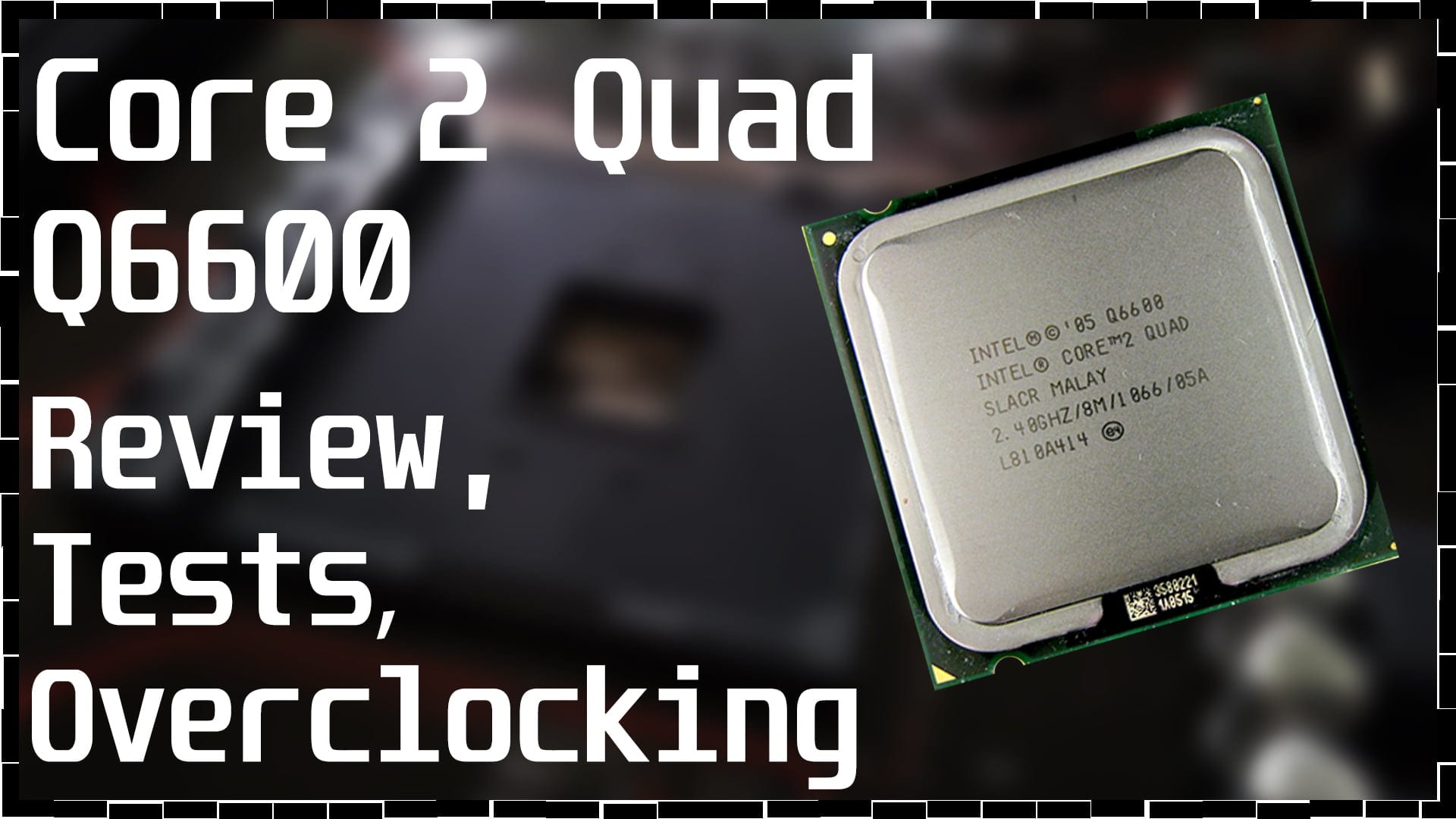
Is it still alive ?!
Core 2 Quad Q6600 (Kentsfield) has always been my favorite processor based on LGA775 because, at its low price, it had all the capabilities of more expensive processors, overclocked to the same frequencies as its older brothers. What more can you ask for from an already not slow processor? But the years passed, at first it was shifted by the very attractive Phenom II X4, and then by its younger brothers Core i3 for LGA1156. They were much colder, accelerated higher, and had similar performance. It lost in games using 2-3 threads, but applications that used more than 3 threads allowed all 4 Q6600 cores to open up, was not within the reach of Core i3. But as I said, the years passed, the Core i3 21xx came out, on the Sandy Bridge core, and for the Core 2 Quad Q6600, it was over. It was already silly to recommend it for an update.
In this article, the bearded Q6600 will face real quad-core processors based on Sandy Bridge and K10.5 architectures: Core i5 2300, Core i5 2500, and Athlon II X4 620 respectively. From its generation, it will face a very powerful dual-core processor Core 2 Duo E8400. I am aware that this is completely unfair. But it has 4 cores, like its competitors, with the exception of the Core 2 Duo. In one of the following reviews, he will have to fight against such processors as Core i3 530, Core i3 2130, and Athlon II X4 641. It will be much more interesting, but for now, let’s find out how one of my favorite processors will show itself against modern titans.
Processor
It’s time to move on to the review. First, let’s take a look at his photo:
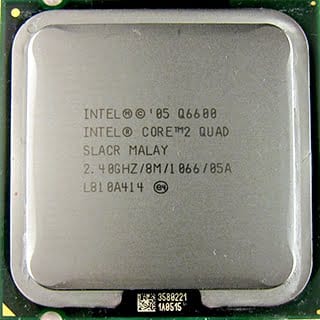
Marking test specimen SLACR, it was produced in Malaysia.
Screenshot of the CPU-Z utility:
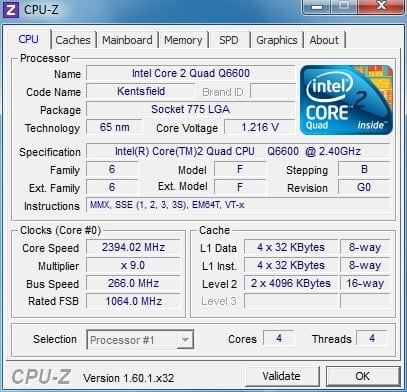
Before us is the most popular quad-core 65nm Kentsfield core. It is equipped with an 8MB L2 cache, the base core voltage is 1.216V. Its base frequency is 2.4GHz, it is obtained by multiplying the system 266MHz bus by a factor of 9. The revision of our G0 copy is simply excellent because the typical heat dissipation is only 95 watts.
Overclocking
The Core 2 Quad Q6600 is renowned for its wild heat when overclocked. And this stopped me already at a frequency of 3150 MHz. Cooler Master Hyper 212+, albeit a very good cooler, but with the wildest C2Q heating, it no longer cope, and at 3300 MHz and 1.36v voltage, the temperature of the hottest core went over 100 degrees. So I had to stop at the base voltage and frequency of 3150 MHz. To do this, the FSB frequency had to be raised from the base 266 to 350 MHz, which, I think, any motherboard based on the P35 / P45 chipset can handle. At the same time, the RAM worked at a frequency of 1400MHz with timings of 9-9-9-28.
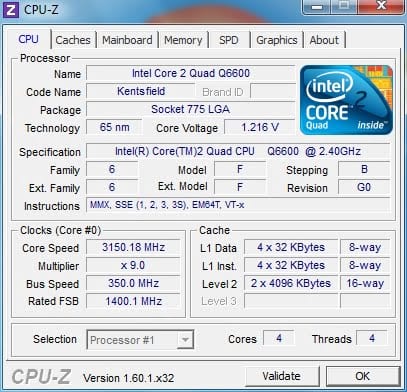
Test setup:
- Motherboard LGA1155 – ASUS P8Z77-V LX (Overclocking and test Core i5)
- Motherboard LGA775 – MSI P35 Neo Combo (Overclocking and test Core 2 Quad)
- Motherboard LGA775 – Biostar P35 D2-A7 (Overclocking and test Core 2 Duo)
- Motherboard AM3 – ASUS M4A785TD-V EVO (Tests Athlon II X4)
- Processors – Core 2 Quad Q6600, Core 2 Duo E8400, Athlon II X4 620, Core i5 2300, Core i5 2500
- CPU cooling LGA1155 – Cooler Master Hyper 212 Plus
- CPU cooling LGA775 – Cooler Master Hyper 212 Plus
- CPU cooling AM3 – Cooler Master Hyper 212 Plus
- RAM – 2x2GB DDR3 Hynix PC12800 (9-9-9-34)
- RAM – 2x2GB DDR2 Corsair PC6400 (5-5-5-16)
- Video cards – Sapphire Radeon HD6950 (800/5000MHz)
- Power supply – FSP 500W
- HDD – Samsung SP160GB
Software:
- Windows 7 x64 SP1
- CPU-Z 1.60.1
- CineBench 9.5 x64
- CineBench 11.5 x64
- Light Work – Renderbench
- 3D Mark 2006 v1.2.0 (CPU test only)
- 3D Mark Vantage v1.1.1 (CPU test only)
- Hot CPU tester PRO
- AMD Catalyst 13.1
- wPrime v1.55
- Fritz Chess Benchmark
- SuperPi 1.4
- FRAPS v3.1.0
Graphics quality settings in games:
GTA IV:
- Resolution – 1280×1024
- Textures – high
- Reflection resolution – high
- Water quality – very high
- Shadow quality – high
- Filtration quality – x16
- Viewing distance – 100
- Detail depth – 100
- Traffic flow – 100
- Depth of field of observation – on/on
- Vertical sync – off/off
Prototype:
- Resolution- 1280х1024
- Textures- high
- Shadows – high
- Anti-aliasing – 0х
Rendering
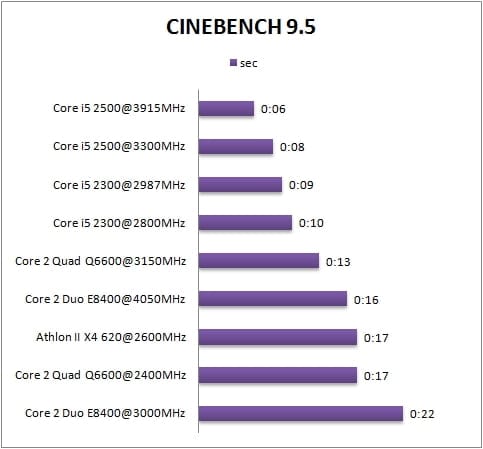
In version 9.5 of the popular rendering speed test, the Q6600, overclocked to 3150MHz, got very close to the Core i5 2300, but don’t forget the difference in frequency. But the lag behind the Core i5 2500, overclocked to 3915 MHz, is generally frightening. More than 100%.
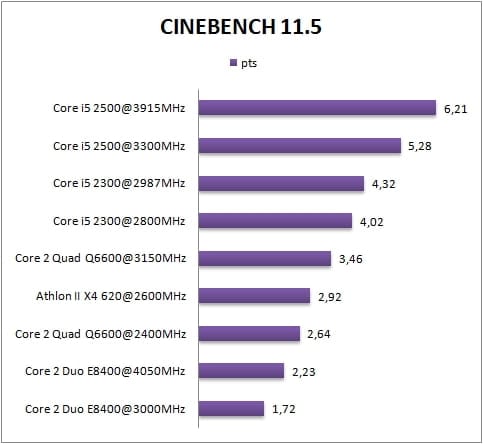
In the fresh version of CineBench, practically nothing changes, except that Athlon II X4 620 noticeably outperformed the Q6600, which works like the first in the base value, and the E8400 ended up in the last places, even with overclocked to 4050 MHz.

RenderBench, single-threaded benchmark. And here you can see how much Sandy Bridge has accelerated compared to Wolfdale and Kentsfield. At over 4GHz, the E8400 was never able to overtake the i5 2300, which runs at almost 3GHz.
Overall performance:

CM 2004 is an old test and it doesn’t support most technologies. But here you can see that applications without support for modern instructions will speed up quite a bit on Core i5 processors.
Calculations
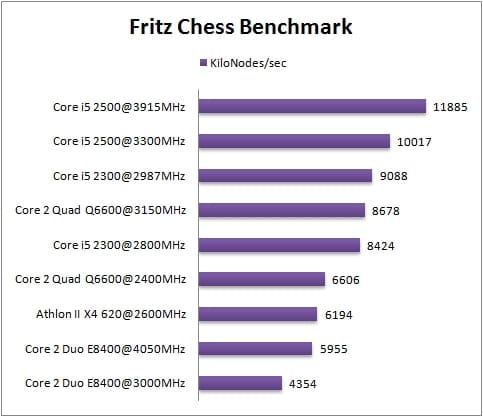
The ring bus, which the Core i5 2300 and 2500 processors have, is not particularly important here. A capacious cache is important here, and a higher frequency than the Core i5 2300 cannot boast. Q6600’s first victory over its brother. Let’s also note the failure of Athlon II X4 620. At a higher frequency, it has a very small cache size, only 512Kb per core, which played a cruel joke on it.

And everything happened again, after the first victory over the i5 2300, the Q6600 was again in pursuit of it.
Archiving
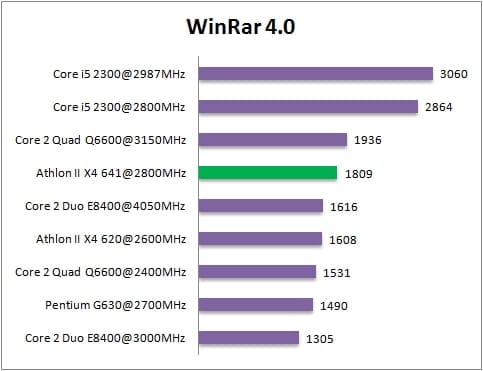
The Q6600 is nothing to catch here, just like the Athlon II X4 620, the ring bus, the lustrous memory controller in the i5 2300, and i5 2500 leave no chance, even to come close to them.
Games: Synthetics
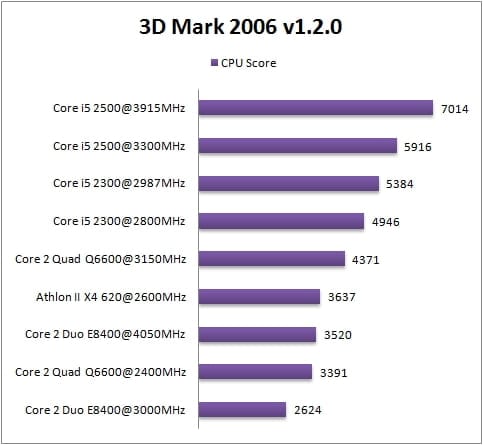
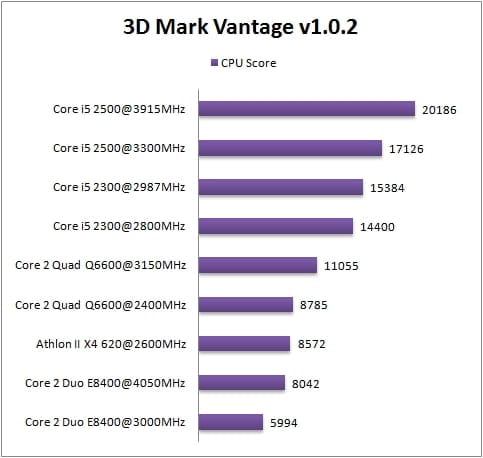
In synthetics, the Q6600 looks pale, although if you remember how old it was this year, you are not ashamed of it.
Games:

In this game, a large cache is important, for this reason, the X4 620 shows such meager results. But the game works well with 3 and 4 cores. It can be seen from the gap between the Q6600 and the E8400. The results of the i5 2500 can be considered inferior since the stand video card Radeon HD6950 is simply not able to produce more frames per second.
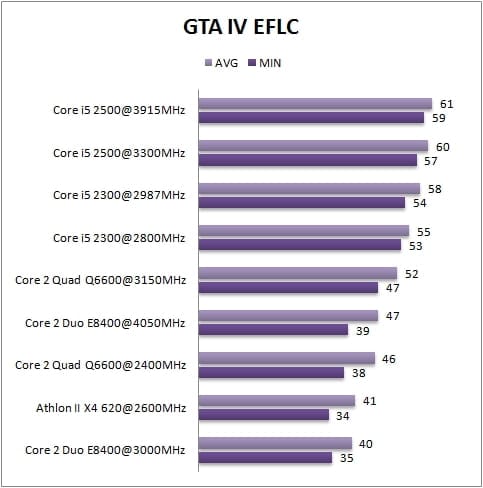
It’s time to stop using the built-in benchmark. After all, the FPS in it goes off scale, but in reality, everything is not at all like that. But it still remains a more or less sufficient test of processors in this game. The capacious cache allowed the Q6600 to overtake the X4 620, but even in overclocking it could not reach the level of the Core i5 2300.
Conclusion
Q6600 is not just a processor, it is a warrior. Its age is 6 years, but in spite of this, the old man, with a successful overclocking, can provide an acceptable level of performance, which commands respect for him. Even if there are cooler and more efficient chips like the Core i5 2300, it is still not as weak as the Core 2 Duo E8400, which still costs sky-high prices, and its performance matches the Celeron G530 or Pentium G630.

